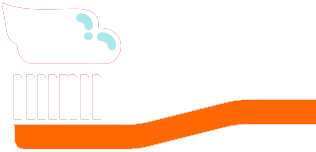Upper jaw expansion, known medically as maxilla expansion or palatal expansion, is an orthodontic treatment to correct misalignment, tooth overcrowding, breathing trouble, or other issues. Dentists or physicians may recommend this treatment when their patient is still young. Learn more about palatal expansion and what devices and surgical options are currently available.

How Upper Jaw Expansion Works and How it Can Help Your Child
Medically Reviewed By Colgate Global Scientific Communications
What Is Palate Expansion?
According to the California Association of Orthodontists, maxillary or palatal expansion is typically recommended when the patient is young because the treatment provides more room for new teeth. Palatal or maxillary expansion can treat the following issues:
- Correcting a crossbite. If your child has a narrow palate, their upper teeth can bite down inside the lower teeth, possibly leading to the lower jaw's asymmetrical growth.
- Eliminating or reducing overcrowding. Palatal expanders can make more space for all your child's upper teeth as they grow.
- Improving breathing ability. Children with narrow or deep palates can have trouble breathing, especially while they sleep. Jaw expansion can increase space for air and clear the airway. Some children with sleep apnea can be good candidates for maxillary (palate) expansion.
Expanding the palate's width can accommodate the development of all your child's teeth, open up the nasal passages, and improve bite alignment.
How Does Jaw Expansion Work?
The palate has two halves that do not fully fuse until adulthood. The space between the sections can be gradually moved apart to encourage more bone to grow between those halves, making the jaw wider.
According to Orthodontics Australia, crossbite and misalignment should ideally be treated before your child goes through their teenage growth spurt, but no younger than seven. If you're an adult and are interested in correcting a crossbite or overcrowding, consult with an orthodontist because there are other dental options for adults.
There are different palatal expansion options, including removable expanders for small adjustments, temporary expanders similar to having braces, and maxillary expansion surgery for more severe cases.
Pros and Cons for Orthodontic Palatal Expanders
Rapid expansion can cause some discomfort during treatment, especially during the first few days. The more severe the alignment issues, the more expensive treatment can be. However, correcting these issues now when your child is young will ensure their adult teeth are in the correct position and will save them expensive treatments later in life.
Rapid Palatal Expander
The rapid palatal expander (RPE) is attached to the upper molars. The RPE will adjust to widen the gap over time by turning a screw in the device's center. The adjustment places outward pressure on the palate's two halves, encouraging bone to grow between them. Your child's orthodontist will decide how often to adjust the expander to promote faster or slower expansion. Sometimes orthodontists may adjust the expander once a week or even daily to get the best results.
Is Surgery Necessary to Expand the Upper Jaw?
Surgically assisted rapid palatal expansion (SARPE), or surgically assisted maxillary expansion (SAME), is used in cases where a device alone cannot accomplish the expansion the patient needs. Your orthodontist and the oral or maxillofacial surgeon will work together to create a custom expander device for your child to wear after the surgery. The surgeon will separate the palate into multiple segments, encouraging bone to grow between those segments as your child wears the palate expander.
Temporary expander devices are most effective with younger patients than adults. Surgery is typically necessary for adults who did not get their crossbite or other alignment issues corrected during childhood. Your orthodontist will make the best recommendation for your situation.
Oral Care After Jaw Expansion
Dental hygiene is critical during and after upper jaw expansion. You should ensure that bacteria and food debris are cleared from around the expander device, especially if your child has undergone expansion surgery. Using toothpaste with fluoride and an antiseptic mouth rinse will ensure your child's mouth is healthy and healing during expansion. Speak with your dentist or orthodontist if you're interested in learning about palatal expansion options or other orthodontic care.
Oral Care Center articles are reviewed by an oral health medical professional. This information is for educational purposes only. This content is not intended to be a substitute for professional medical advice, diagnosis or treatment. Always seek the advice of your dentist, physician or other qualified healthcare provider.







